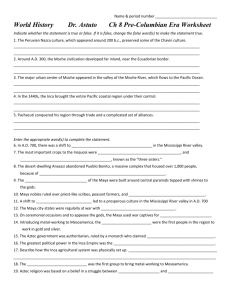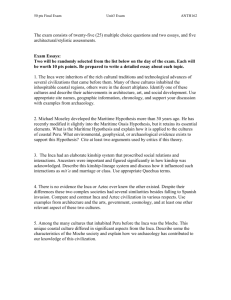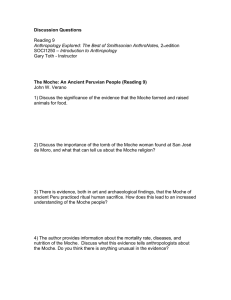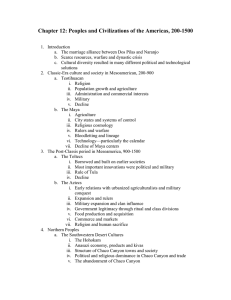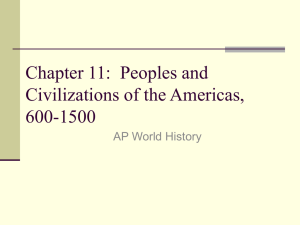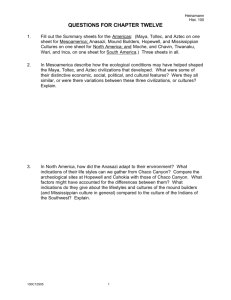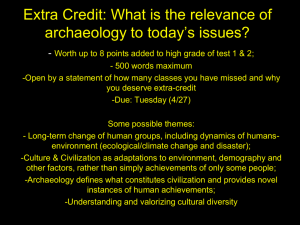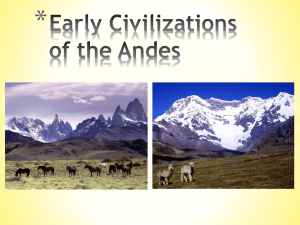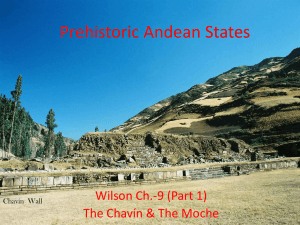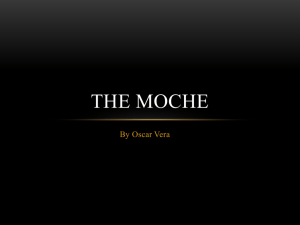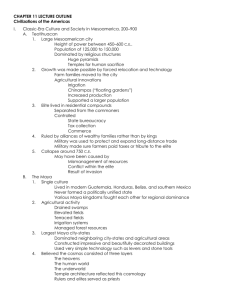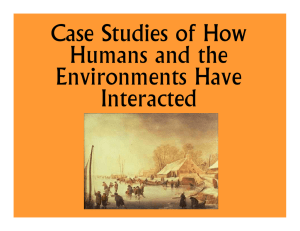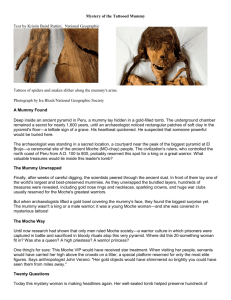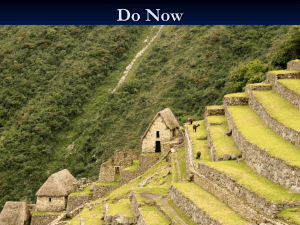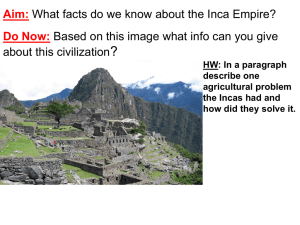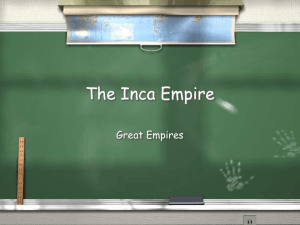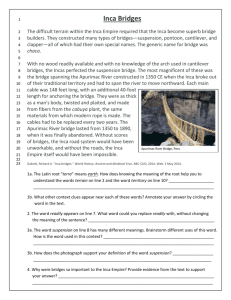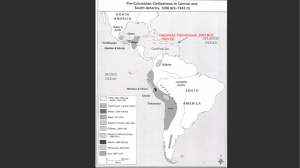Chavín horizon
advertisement
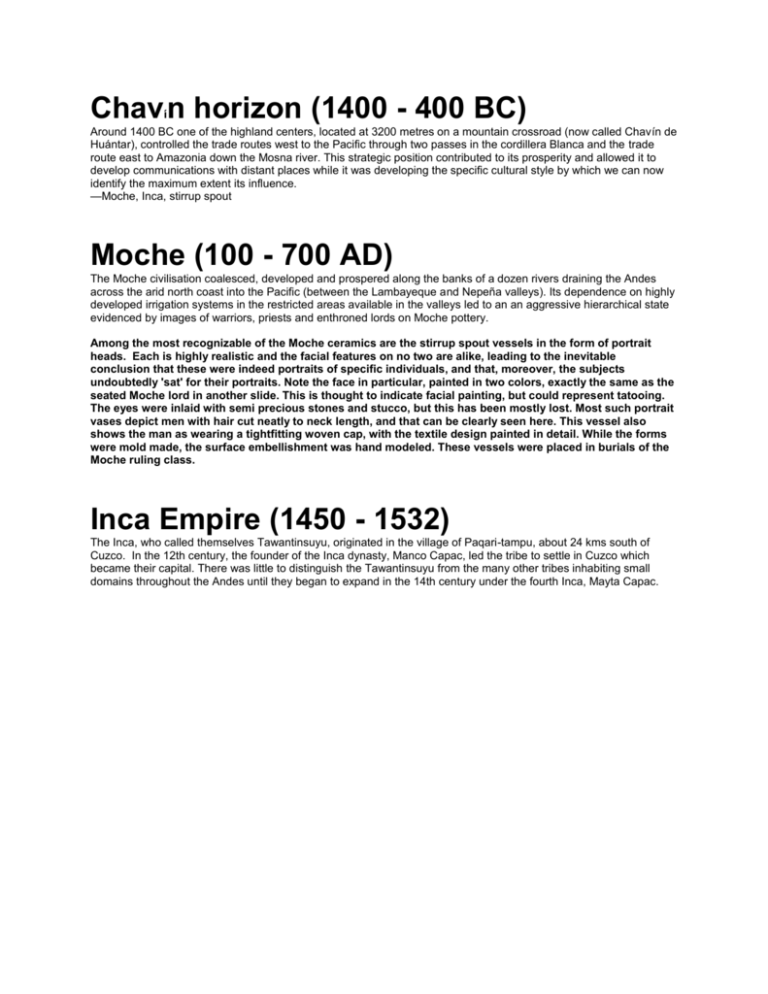
Chav n horizon (1400 - 400 BC) í Around 1400 BC one of the highland centers, located at 3200 metres on a mountain crossroad (now called Chavín de Huántar), controlled the trade routes west to the Pacific through two passes in the cordillera Blanca and the trade route east to Amazonia down the Mosna river. This strategic position contributed to its prosperity and allowed it to develop communications with distant places while it was developing the specific cultural style by which we can now identify the maximum extent its influence. —Moche, Inca, stirrup spout Moche (100 - 700 AD) The Moche civilisation coalesced, developed and prospered along the banks of a dozen rivers draining the Andes across the arid north coast into the Pacific (between the Lambayeque and Nepeña valleys). Its dependence on highly developed irrigation systems in the restricted areas available in the valleys led to an an aggressive hierarchical state evidenced by images of warriors, priests and enthroned lords on Moche pottery. Among the most recognizable of the Moche ceramics are the stirrup spout vessels in the form of portrait heads. Each is highly realistic and the facial features on no two are alike, leading to the inevitable conclusion that these were indeed portraits of specific individuals, and that, moreover, the subjects undoubtedly 'sat' for their portraits. Note the face in particular, painted in two colors, exactly the same as the seated Moche lord in another slide. This is thought to indicate facial painting, but could represent tatooing. The eyes were inlaid with semi precious stones and stucco, but this has been mostly lost. Most such portrait vases depict men with hair cut neatly to neck length, and that can be clearly seen here. This vessel also shows the man as wearing a tightfitting woven cap, with the textile design painted in detail. While the forms were mold made, the surface embellishment was hand modeled. These vessels were placed in burials of the Moche ruling class. Inca Empire (1450 - 1532) The Inca, who called themselves Tawantinsuyu, originated in the village of Paqari-tampu, about 24 kms south of Cuzco. In the 12th century, the founder of the Inca dynasty, Manco Capac, led the tribe to settle in Cuzco which became their capital. There was little to distinguish the Tawantinsuyu from the many other tribes inhabiting small domains throughout the Andes until they began to expand in the 14th century under the fourth Inca, Mayta Capac.

